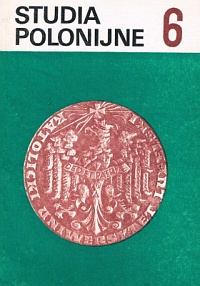History of Chaplaincy in Adampol — Polonezköy (1842-1977)
Main Article Content
Abstract
The present paper aims at answering the problem on chaplaincy in Adampol on the basis of the archives preserved in Polish libraries. To what degree chaplaincy in Adampol helped to retain the Polish character of the village in Turkey is answered in the conclusion.
Chaplaincy affairs are considered not only as the Church duties but also as all the activities of every priest in Adampol. Adampol is the only Polish village in Turkey which has preserved its original Polish character. The inhabitants’ strong affiliation to the Roman Catholic Church is the last but not least distinctive feature of the village. From the beginning of settlement Adampol was included into the Roman Catholic community. Since 1842 till 1883 the area belonged to the Congregation of the Lazarists. They took spiritual care of the inhabitants and secured protection of the French law for their people. Initially, the priestly duties were carried out by the Franciscans of Bosnia (from 1846 to 1853). Later, other priests, Poles in particular, maintained Catholicism in Adampol. From 1913 to 1936 the Salesians administered the area, however, after the 2nd World War the continuation of chaplaincy in Adampol suffered many breaks and more and more Turkish priests ministered to the parish.
In the history of Adampol, chaplaincy there faced numerous difficulties which had their source in the poor economic state of the village. Most often the village did not have any funds to support the church and the priests. In this respect, help came from the Association of the Propagation of the Faith in Paris which provided financial aid for the parish.
Polish priests worked not only as chaplains but also as administrators of the village (Fr Sadowski) and were even chosen chiefs (Fr M. Ławrynowicz). Those who arrived at the village directly from Poland created a „bridge” between the Poles in Adampol and their fellow-countrymen in Poland. They brought in the Polish language and refreshed national Christian traditions there, which helped to preserve Polish national consciousness among the inhabitants. Christian traditions (which were at the same time Polish) were subject of many homilies and teachings. The priests working in Adampol had great mźerit in keeping Christian and Polish tradition there, so that now, Poles can speak of Polish Adampol in Turkey arid the Turks of the Polish village called Polonezköy.

